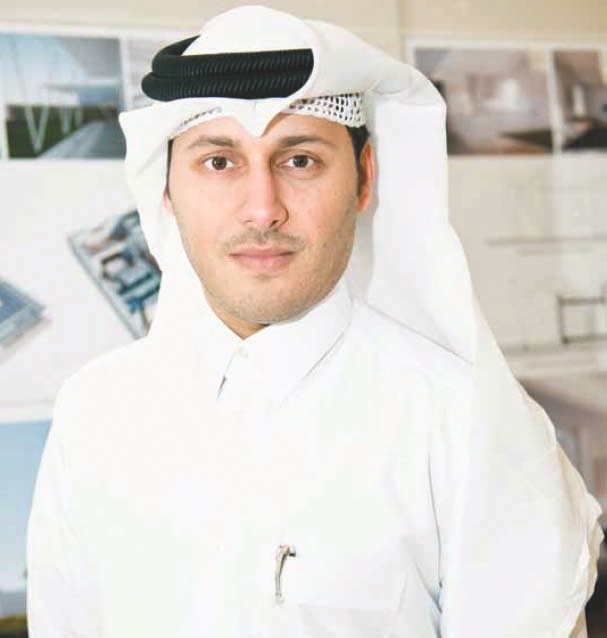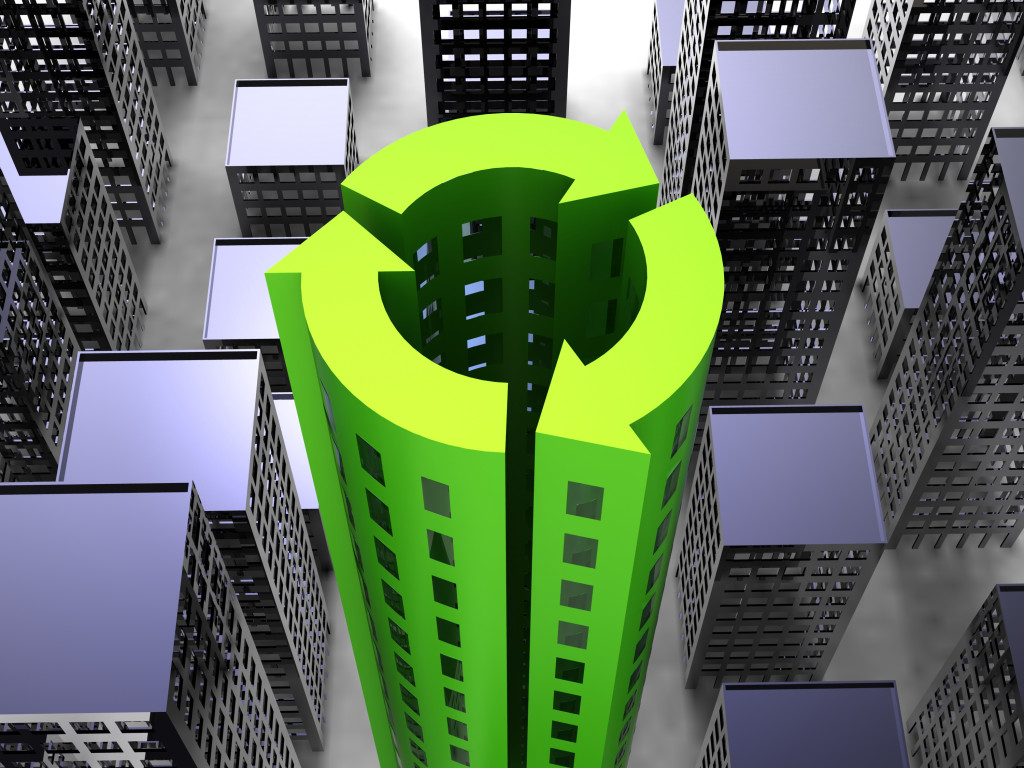In a conversation with Fatima de la Cerna of Climate Control Middle East, Meshal Al Shamari, Director of Qatar Green Building Council (QGBC), explains why he believes healthy buildings are the next generation Green Buildings. He also shares his views on the country’s sustainability efforts and what the Council is doing to support the Qatar National Vision 2030.
How would you assess the present state of the Green Building sector in Qatar? Do you think it has shown significant development over the years? And what are your projections for the sector for the next couple of years?

Meshal Al Shamari, Director of Qatar Green Building Council (QGBC).
In the last 10 years, Qatar has enjoyed several big achievements and taken some big steps. Qatar, in fact, has one of the first Green Building projects in the region, Msheireb Properties, which is in completion right now. The project consists of a hundred buildings that will be rated as either LEED Gold or LEED Platinum – the biggest collection of LEED Gold and Platinum developments in the world.
Qatar Foundation, since 2006, has developed numerous LEED Gold projects. And, with 12 buildings certified, it has the world’s biggest collection of LEED Platinum projects.
Qatar is also the home of Lusail City, being developed to become one of the biggest sustainable cities in the world, with all buildings going for GSAS (Gulf Sustainability Assessment System) certification. In addition, all Ashghal (Public Works Authority) and municipality projects are required to be GSAS-certified, providing a good push for the Green Building sector in the country. As a matter of fact, we are now ranked second in the MENA region, in terms of the number of Green Buildings – about 400 to 500.
I think, in the coming few years, we’ll have more stringent regulations from the government that will make green requirements mandatory for both public and private projects. The government actually supports a big part of the industry by regulating the green requirements for governmental projects, but we still need to put in more efforts in the private sector. The regulations are still optional for the private sector, so it’s lagging behind. The coming years will also see us [QGBC] working with the Ministry of Environment and other environmental organisations to develop green codes and green rating systems that will be more approachable for the private sector.
Is GSAS not accessible to the private sector?
It’s not about GSAS not being accessible, because there are some big projects that are now GSAS-certified. The problem is not GSAS but the private sector’s acceptance of the idea of GSAS and of green rating systems, in general. GSAS is not mandatory for the private sector, but it is for government projects, and we have big projects that are aiming for GSAS and LEED certifications. The stadiums for the 2022 World Cup, for instance, will have dual certification; they’ll all be GSAS- and LEED-certified. The metro will be GSAS-certified, as well. The government is serving as an example and is leading the market.
The private sector is trying to follow, but it still depends on the size of the project. We have big shopping centres applying for LEED and GSAS certification, as are other private-sector projects like hospital buildings. But more effort is still needed to encourage that sector. So I think in the coming years, there will be mandatory but very approachable green codes that will identify minimum Green Building requirements. Because you see, Green Buildings don’t require you to invest a lot of money and bring in specialised consultants. You just need to change some materials, like the glazing and the type and quality of insulation, adopt construction waste recycling and use recycled materials – basic elements that can give you good payback or rewards.
Have you started developing the green codes you mentioned?
At present, there is the Qatar Construction Specifications or QCS, which has a section for green products and Green Buildings, and then there will be a separate set of green codes for the whole construction industry. Preparation for that has started. Hopefully, that will be launched within this year, but that will go through several stages. It will be optional for one or two years before becoming mandatory, but it will target different projects, like commercial, governmental, private and residential. Thus, it has to go through different stages, because you cannot apply everything at one go. And we have the Qatar National Vision 2030, for which we are part of the review team, and one of its pillars is environmental development or sustainability, and everybody is working towards that goal.
You said that in the last 10 years, Green Building in Qatar has picked up pace. How has the Council helped bring about its growth?
When QGBC started in 2009, nobody really knew what Green Buildings were, and this wasn’t true just in Qatar but in the whole region. Back then, the most mature Green Building developments were in North America and Europe.

Image credits: Shutterstock
Even when I joined QGBC in 2012, the concept was still new to the public, so our role has been to raise awareness and to promote Green Building.
It has been a long journey. It took us quite a while to educate everyone on what we mean by Green Buildings. And until today, some people still confuse Green Building with landscaping. I don’t, of course, mean people in the industry, because they know what we mean by Green Buildings. So, we work on two levels. The first is raising awareness, which is mostly aimed towards the public. The second is providing training to professionals or people in the industry. In 2014, we trained about 600 professionals – consultants, developers, government employees, construction clients, etc. – on Green Building certification systems. We’ve also worked with university students, training and educating them so they can take the message when they graduate.
When you spoke at a workshop on affordable housing and sustainable communities at The Big 5 Dubai, you suggested a shift from Green Buildings to healthy buildings, at least label-wise. Could you elaborate on that?
Green Building certification systems started in the early 1990s, in the United Kingdom, with BREEAM and then in the United States with LEED. The aim was to save the environment, by conserving energy and water, recycling waste and construction materials and controlling the environment. Dust control, air quality and the use of natural resources like natural lighting and natural ventilation systems – those became the focus. And when buildings were commissioned, people started figuring out that Green Buildings offer benefits other than efficiency. For example, we use fewer toxic materials for interiors, and control not just air quality but also air circulation and noise levels.
In the Green Building sector, we work to make buildings healthier for users and tenants by regulating everything related to the quality of the indoor environment. In the last five years, when promoting the idea of Green Building to developers or owners who, typically, want a short payback period for their investment – we’ve been trying to focus on the asset value of Green Buildings, because in the real estate market, they are priced higher than traditional buildings. Even the rental price is higher. Of course, reduced energy consumption meaning lower energy bills – is one factor behind the better asset value, but there’s also the quality of the indoor environment and the well-being of the occupants.
Many studies show that 80-90% of the operational costs of organisations go to their employees’ salaries. The rent of the facilities is perhaps 10-15% and energy bills just one to two per cent, so most of the investment goes to the employees. Studies have also shown that green developments, like office buildings, banks and hospitals, report increased employee performance.
Green Building requirements, for the most part, reflect ASHRAE standards, and ASHRAE considers the comfort levels of building occupants. In the case of air conditioning and room temperature, for example, ASHRAE determines the optimum level, because if it’s very cold, people become lazy. If it’s very warm, they feel uncomfortable. However, if the temperature is just right, occupants will feel comfortable and will, thus, perform better.
With Green Buildings, asthma cases can also be controlled. In Qatar, around 20% of the population suffers from asthma. That’s very high. If we control the Indoor Air Quality, we will be able to control or reduce asthma rates. Even the prevalence of sick building syndrome (SBS) can be reduced, which can again contribute to increasing the performance levels of those who use the building.
 There’s actually a new rating system connected to LEED. It’s called the WELL Building Standard, and it focuses on the well-being of the building occupants. It looks into elements like light fixtures and natural lighting, the colour of materials used for the interiors and ventilation. All those affect the residents or users of the facilities of the building.
There’s actually a new rating system connected to LEED. It’s called the WELL Building Standard, and it focuses on the well-being of the building occupants. It looks into elements like light fixtures and natural lighting, the colour of materials used for the interiors and ventilation. All those affect the residents or users of the facilities of the building.
With this new certification system in place, and with the attention being given to the relationship between wellness and the indoor environment, I think that healthy buildings will be the next-generation Green Buildings. After all, nobody wants to live in an unhealthy building. If you send your kids to school, I’m sure you’ll feel more comfortable knowing that school is healthy. And I’m sure you’ll feel more comfortable going to a “healthy” hospital, where recovery rate is 10 to 12% higher than regular hospitals. If the performance of a bank’s employees goes up by 15%, it will mean added revenue for the bank, so banks should be interested in the type of building that can help achieve that result. Green Buildings may not interest everyone but healthy buildings will.
According to feedback we’ve received from some stakeholders, the UAE construction industry and its related markets are seeing a slowdown as a result of the continued dip in oil prices. Have you noticed the same thing happening in Qatar? Are you seeing an impact on the preparation for the 2022 FIFA World Cup?
I think the issue with the oil price is affecting all the countries in the GCC region. But in Qatar, I know the government has not stopped investments in infrastructure projects. Those projects are safe, and the government has set targets to ensure they are completed on time. So, the FIFA projects, the metro project and other infrastructure projects are still ongoing. Qatar doesn’t depend solely on oil and gas. It has started diversifying its income streams, putting the country in a good position. There’s an impact for sure, but it’s not affecting investments in infrastructure projects, because they’ve been planned a long time back by the government. There are already plans for up to 2025, 2030.
Copyright © 2006-2025 - CPI Industry. All rights reserved.